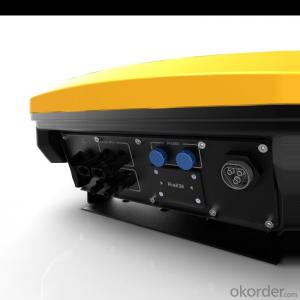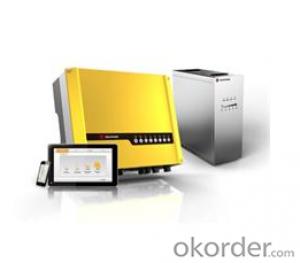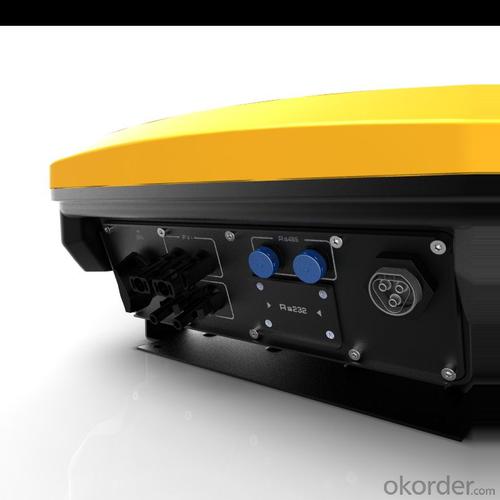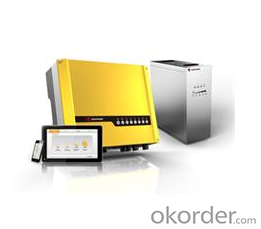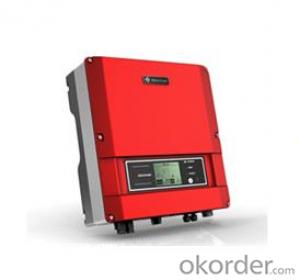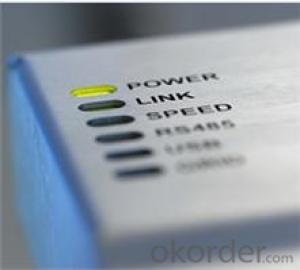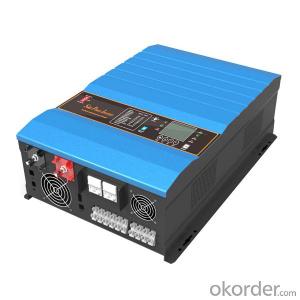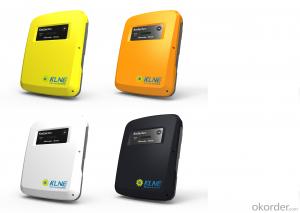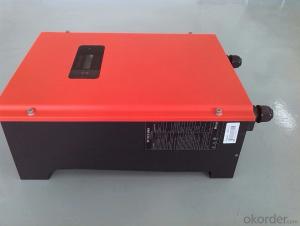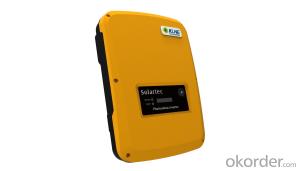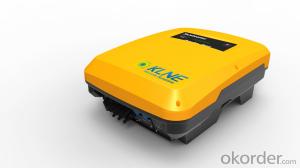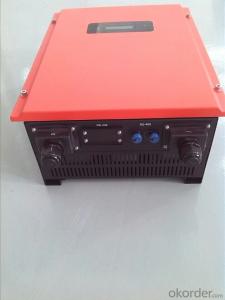Solar Inverter 500 Watt Off-Grid Type Solo-150 Series
- Loading Port:
- Shanghai
- Payment Terms:
- TT OR LC
- Min Order Qty:
- 10 unit
- Supply Capability:
- 1000 unit/month
OKorder Service Pledge
OKorder Financial Service
You Might Also Like
Product Description:
This system can keep 4 energy-saving bulbs with 15W working for 7 hours per day and a 5W radio working for 5 hours a day.
Output voltage: 5V d. c. (USB port) / 12V d. c.
It can work for 3 successive rainy days.
Powered by DC current
Can used out of doors
High effiency and low noise
FAQ
What is your payment terms?
We accept T/T payment, normally we need 20% T/T in advance, 80% payed before shipment.
What is your packing system?
We put the sistem in the wooden box.
Can you do OEM service?
Yes we can, but we need to do it with a certain order quantity.
● System voltage:12V
Ø
Ø
Ø
● Output DC current:6 phases
Product Datasheet:
Main Accessories | Specifications | No. | Notes |
Box | High-quality rolled steel | 1 | Standard box, optional colors |
PV modules | Polysilicon 150Wp | 1 piece | Optional |
Storage battery | Lead acid, maintenance-free, 160Ah | 1 piece | Optional |
Controller | Solo-LS1524S 15A | 1 unit | Standard |
PV accessories shelf | Simple type | 1 set | Optiona |
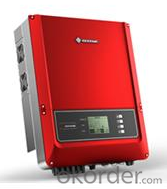
Product Advantages:
- Q: Are there any limitations on the number of solar panels that can be connected to a single inverter?
- Yes, there are limitations on the number of solar panels that can be connected to a single inverter. The maximum number of panels that can be connected depends on the inverter's capacity and the total wattage of the panels. It is important to ensure that the combined wattage of the panels does not exceed the inverter's maximum input capacity to avoid any potential performance issues or damage to the system.
- Q: Can a solar inverter be used with different solar panel technologies?
- Yes, a solar inverter can be used with different solar panel technologies. Solar inverters are designed to convert the direct current (DC) produced by solar panels into alternating current (AC) for use in homes and businesses. They are typically compatible with various solar panel technologies, such as monocrystalline, polycrystalline, and thin-film panels. However, it is important to ensure that the inverter's specifications and capabilities align with the specific solar panel technology being used for optimal performance and efficiency.
- Q: How does a solar inverter handle sudden changes in solar irradiation?
- A solar inverter handles sudden changes in solar irradiation by continuously monitoring the incoming solar energy and adjusting its output accordingly. When there is a sudden increase in solar irradiation, the inverter quickly ramps up its power conversion to match the higher energy input. Similarly, when there is a sudden decrease in solar irradiation, the inverter reduces its power conversion to align with the lower energy input. This dynamic response ensures that the inverter efficiently converts the available solar energy into usable electricity, maintaining a stable power output despite fluctuations in solar irradiation.
- Q: Can a solar inverter be used in regions with extreme weather conditions?
- Yes, solar inverters can be used in regions with extreme weather conditions. However, the durability and performance of the inverter may vary depending on the specific weather conditions. It is important to choose a solar inverter that is designed to withstand the extreme weather conditions of the region, such as high temperatures, strong winds, heavy rain, or snow. Additionally, proper installation, regular maintenance, and protection from harsh weather elements can help ensure the longevity and efficient operation of the solar inverter in extreme weather conditions.
- Q: What is the role of a voltage regulator in a solar inverter?
- The role of a voltage regulator in a solar inverter is to maintain a stable and consistent voltage output from the solar panels. It ensures that the varying DC voltage produced by the panels is converted to a constant AC voltage suitable for powering electrical appliances. This helps to protect the connected devices from potential damage caused by voltage fluctuations and ensures optimal performance of the solar inverter system.
- Q: What are the key factors affecting the lifespan of a solar inverter?
- The key factors affecting the lifespan of a solar inverter are the quality of components used, the level of maintenance and care, the operating environment, and the overall design and build quality of the inverter.
- Q: How is a solar inverter different from a regular inverter?
- A solar inverter converts the direct current (DC) generated by solar panels into alternating current (AC) to be used in homes or fed back into the electric grid. In contrast, a regular inverter is typically used to convert DC power from batteries or other sources into AC power for general electrical use. The main difference lies in their purpose and the source of the DC power they convert.
- Q: How does the maximum AC current rating affect the performance of a solar inverter?
- The maximum AC current rating of a solar inverter determines the maximum amount of power that the inverter can convert from DC to AC electricity. If the current rating is too low, the inverter may not be able to handle the peak power output from the solar panels, resulting in reduced performance and potential overheating or failure. On the other hand, if the current rating is high enough to handle the maximum power output, the solar inverter will perform efficiently and effectively, ensuring optimal energy conversion and output.
- Q: How does a solar inverter handle high temperatures?
- A solar inverter handles high temperatures by incorporating various cooling mechanisms such as heat sinks, fans, and thermal management systems. These components help dissipate heat generated during the inverter's operation, preventing overheating and ensuring optimal performance even in hot climates.
- Q: Can a solar inverter be used with different types of solar panel mounting systems?
- Yes, a solar inverter can be used with different types of solar panel mounting systems. The function of a solar inverter is to convert the direct current (DC) produced by solar panels into alternating current (AC) that can be used to power household appliances or fed into the grid. The compatibility of the inverter with different mounting systems depends on the electrical specifications and requirements of the panels and the inverter. As long as the electrical connections and voltage requirements are met, a solar inverter can be used with various types of solar panel mounting systems such as roof-mounted, ground-mounted, or pole-mounted systems.
Send your message to us
Solar Inverter 500 Watt Off-Grid Type Solo-150 Series
- Loading Port:
- Shanghai
- Payment Terms:
- TT OR LC
- Min Order Qty:
- 10 unit
- Supply Capability:
- 1000 unit/month
OKorder Service Pledge
OKorder Financial Service
Similar products
Hot products
Hot Searches
Related keywords
